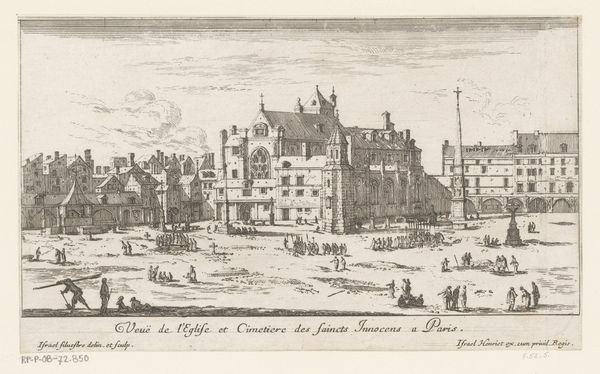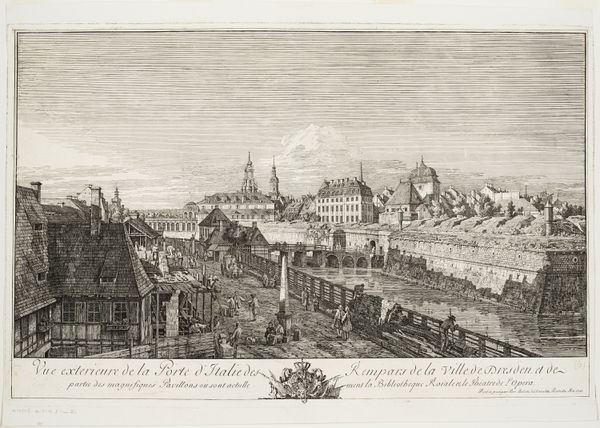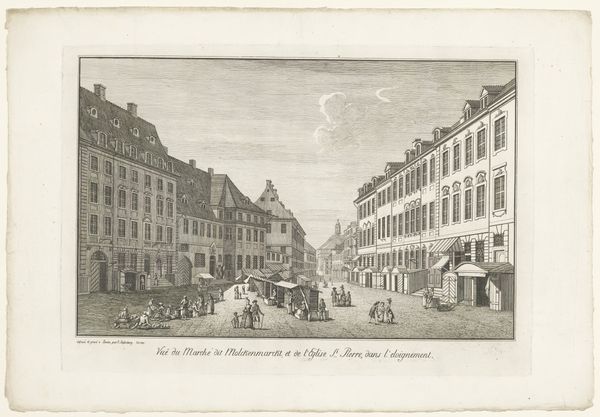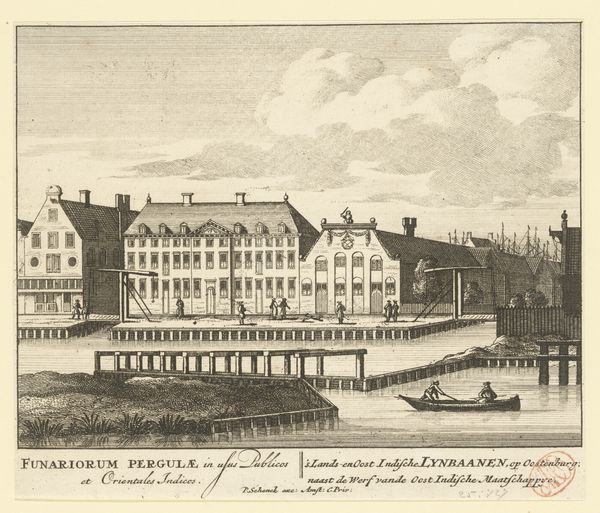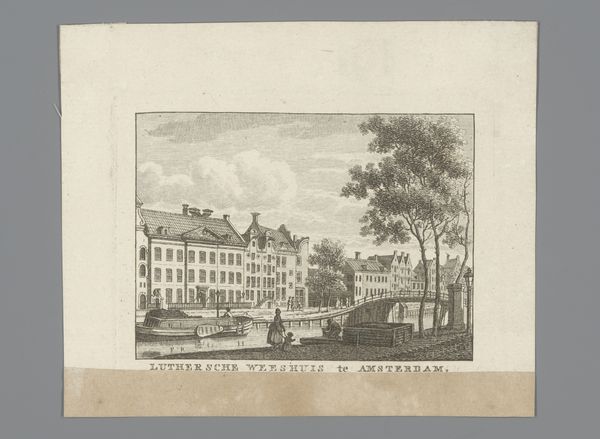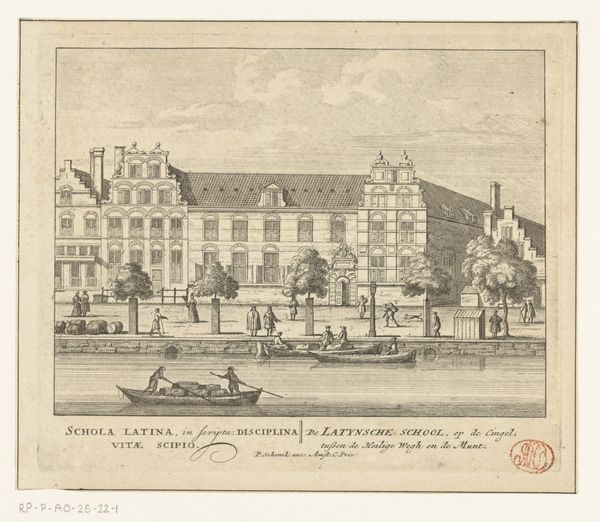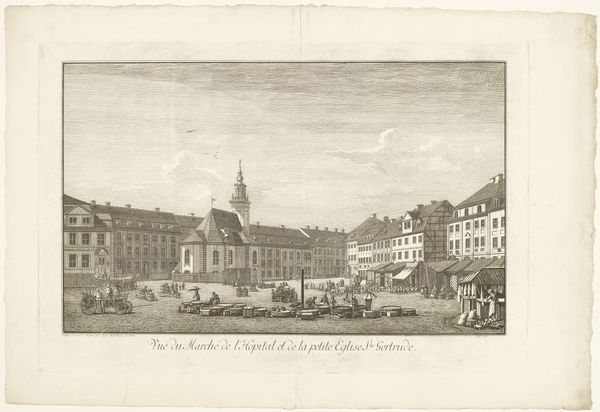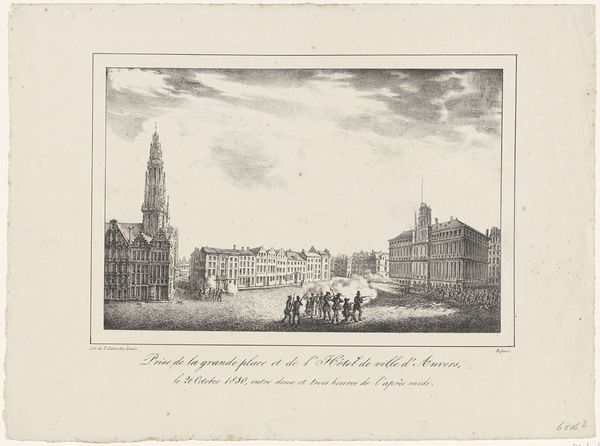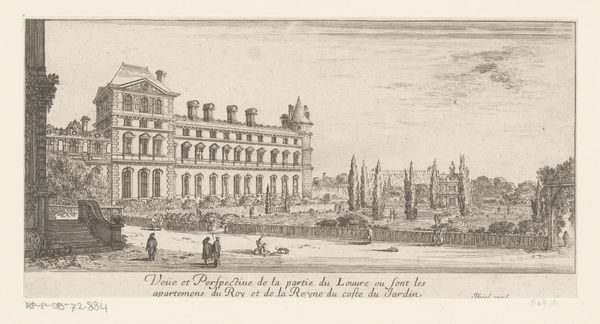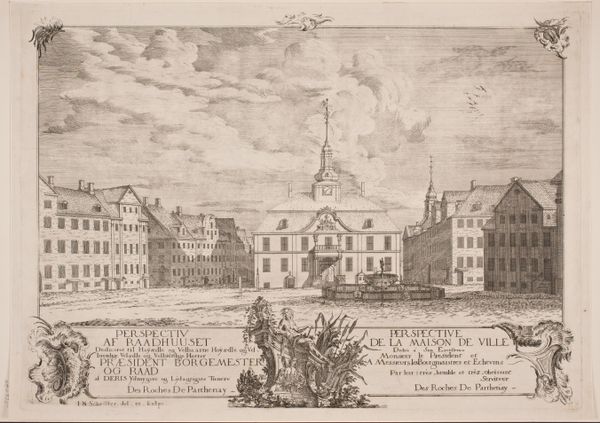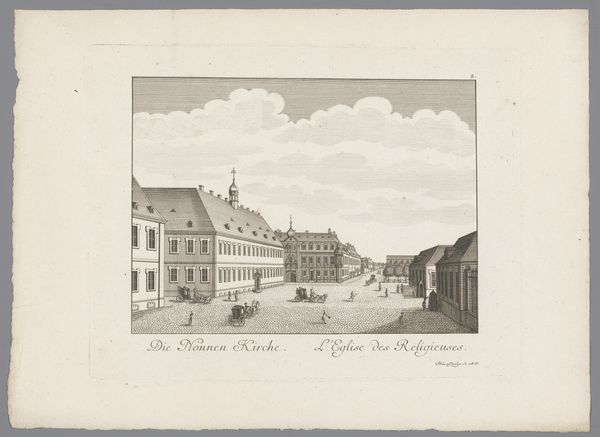
print, etching
#
baroque
# print
#
etching
#
landscape
#
cityscape
#
genre-painting
Dimensions: height 519 mm, width 815 mm
Copyright: Rijks Museum: Open Domain
Editor: So, here we have "View of the Old Market of Dresden from the Seegasse" by Bernardo Bellotto, created in 1752. It's an etching, a print, and my first impression is that it captures a bustling marketplace scene. What catches your eye, what story does it tell you? Curator: Well, immediately, I see how Bellotto presents a vision of civic order and prosperity in Dresden. Consider the social function of cityscapes in the 18th century; they were often commissioned to project power and stability. This etching, reproduced and circulated widely, served as a form of visual propaganda, showcasing Dresden as a vibrant, well-managed urban center, perhaps to encourage trade or investment after periods of conflict. Do you notice how the buildings are meticulously rendered? Editor: Yes, the architecture is incredibly detailed! It almost feels photographic. Curator: Exactly, Bellotto, like his uncle Canaletto, was known for his precision. However, it’s important to remember that these views are not always entirely accurate. They often present an idealized version of reality. Think about the patronage system. Who was commissioning these works and what image did they want to convey about their city? It raises interesting questions about authenticity and the political role of art. Editor: So it's not just a record of what the city *looked* like, but a statement about what it *represented*. Were these types of scenes commonly commissioned? Curator: Absolutely! Cityscapes became increasingly popular, offering patrons a way to promote their urban centers and cement their legacy. Also, prints allowed for wider circulation of these images, reinforcing particular narratives about power and progress. Editor: That gives me a totally new perspective. I was focused on the 'snapshot' of daily life. Now I realize there's a deeper, politically-charged story being told. Curator: Precisely. Understanding the social and historical context allows us to unpack the layers of meaning embedded in this seemingly straightforward cityscape. Editor: Thanks. Now when I look at it, I see not just buildings, but the message behind them. Curator: A successful analysis. Now it also interests me more, as something that's less of a direct window into the past and more of a produced reality.
Comments
No comments
Be the first to comment and join the conversation on the ultimate creative platform.

